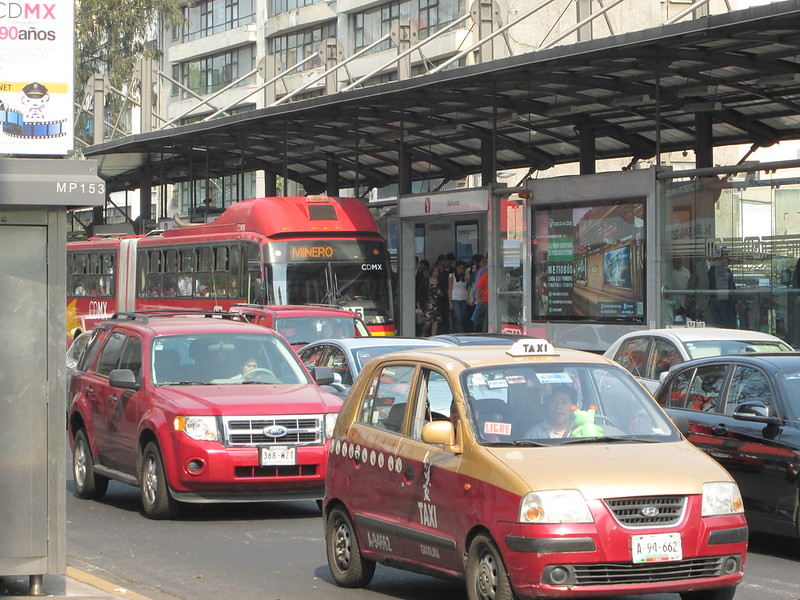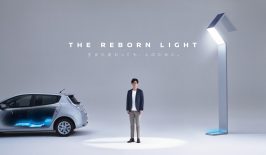In a bid to reduce the city’s carbon emissions and clean up the air, Mexico City continues to harness the potentials of e-mobility, announcing new plans to make one of its major roads completely “emissions-free”.
Declared the “most polluted city in the world” by the United Nations in 1992, Mexico City has come a long way since then. City officials have implemented ambitious plans to reduce emissions (from its transport sector in particular), including putting bans on driving on certain days of the week and introducing the largest bike-sharing system in North America. The city is certainly on the right track, achieving an impressive 7.7m-tonne reduction in carbon emissions between 2008 to 2012. But the city’s roads still remain notoriously congested and the air dangerously polluted.
While the city already has an immense public transportation network, including metro, light rail, bus, bus rapid transit (BRT) and bike sharing, the system still does not comfortably accommodate the 9 million urban residents and the additional 17.3 million daily commuters travelling to and from the city. Due to the city’s growing population and its ongoing air pollution problem, mobility is a big topic on the urban agenda. Globally, the transport sector has been identified as the leading cause of urban air pollution, and in Mexico City, transportation alone causes 45% of the city’s GHG emissions.
A Clean, Electric Road in the Polluted City
City planners are therefore always on the lookout for innovative ways to decrease the impact of the city’s transport network. The idea for the “Eje 8 Green Corridor”, was originally developed with the support of the C40 Cities Finance Facility (CFF) (a global network of cities dedicated to improving the environment and fighting climate change) and the German Society for International Cooperation (GIZ). The plan was to introduce a 22-kilometre stretch of road that would be exclusively for electric busses and bicycles, along the “Eje 8 Sur” avenue, one of Mexico City’s busiest roads, that runs east-west in the south of the city. Several feasibility studies were carried out to test different electric vehicles, but the project was stalled with the election of a new mayor for Mexico City in 2018.
Just recently, in 2019, the new mayor, Claudia Sheinbaum, announced a new strategic mobility plan for the mega city, and budget of 10.2 billion Mexican pesos (around 475 million euros) to achieve it. According to Gustavo Jimenez, executive director of the Transportation Regulatory Body of Mexico City, the Eje 8 Green Corridor project has changed with the new government and will now become an elevated bus lane, specially designed for electric trolleybuses. The buses will be charged via overhead cables all along the 8-kilometre stretch of road, which is set to serve 130-160,000 people each day. There will be stations at regular intervals along the route to allow people to get out and switch to different forms of transport. Its set to be the first of its kind of Mexico City and construction is due to begin at the end of 2020.
To see what it might end up looking like in real life, you can check out a rendering here (video in Spanish!):
Mexico City’s Mobility Secretariat is planning to reduce a huge 30% of the contamination caused by transportation by the year 2024. “We are still working on electric mobility policies but the plan in Mexico is to bring new electric trolley buses to operation and to promote electric taxis and hybrid taxis,” commented Jimenez. This announcement comes hot on the heels of another big clean transport plan: in February 2019 the mayor released details of a huge urban cable car project for the city. This planned network known as the “Cablebús” is set to be 34 kilometres long, spread out over four different lines. It could offer 114 million trips to residents each year, offering increased access to the city centre for those living in the peripheries of the city, and another chance to float above the congested traffic, rather than get stuck in it. If it becomes reality, Mexico would be home to the largest network of cable propelled transit systems in the world, stealing the title from La Paz with its Mi Teleférico network. The cable car lines are set to be operational by July 2020.
And the city is investing in other measures to clean up the air too, like vertical gardens and even artificial pollution-scrubbing trees to help clean up the air.
There are benefits to electric public transport beyond the reduction in GHG emissions and particle pollution. Electric vehicles also limit noise pollution, which is an unexpected cause of several social and health issues. Considering Mexico City’s high air pollution and noise pollution levels, the case for e-mobility is strong and we’re glad to see the city government is on board.
For more on the progress, potentials and pitfalls of e-mobility, you can dive into RESET’s E-Mobility special right here.






